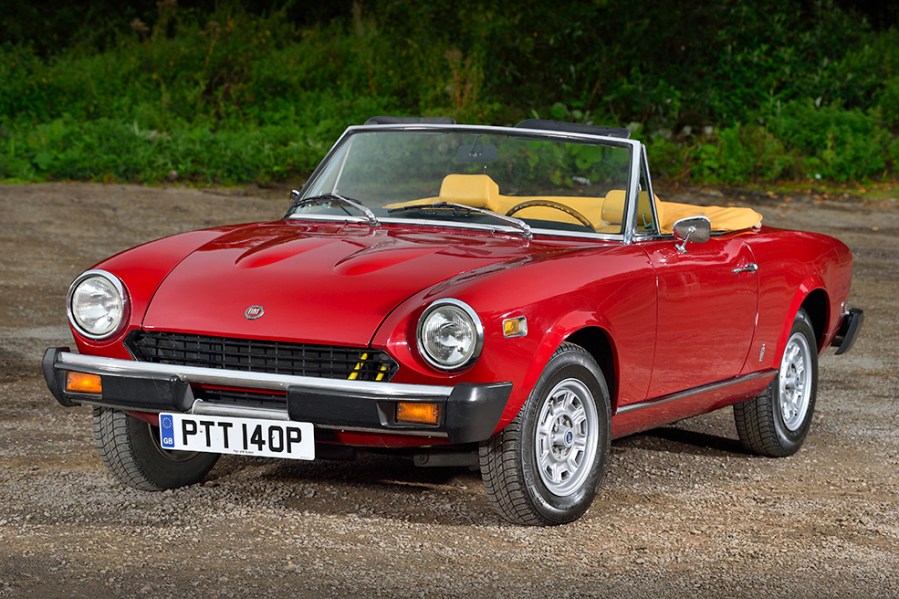As a rarer alternative to a British-built roadster, the handsome and fun-to-drive Fiat 124 Spider makes an interesting choice
Images: Matt Woods
Although never officially sold in the UK, the Fiat 124 Spider has been personally imported a lot over the years. With 75 per cent of all examples built sold in the USA, many of the 124 Spiders now residing in the UK are ex-Californian imports.
This classic Fiat enjoyed a long career, launching in 1966 with an 89bhp 1438cc DOHC engine, upgraded to 1608cc (and 108bhp) in 1970 before being marginally reduced in capacity to 1592cc and 105bhp in 1973. The following year saw a 1756cc version arrive, followed by a 1995cc derivative in 1979. The start of the 1980s brought Bosch fuel-injection to replace the old Weber carbs, upping power to 104bhp.
Higher-performance versions were also offered, including a US-only turbocharged model (of which around 700 were built between 1981 and 1982) thanks to a link-up between Fiat and American company Legend Industries. Towards the end of Spider production there was also a Europe-only supercharged variant known as the Volumex, with an impressive 133bhp on tap.
Although the basic styling of the Spider remained remarkably unchanged over the years, there were numerous trim updates. The bumpers grew in size to comply with America’s increasingly stringent safety legislation, which means the earliest cars are by far the prettiest. On the other hand, the extra performance of the later models makes these equally sought after now.
The 124 Spider was a Pininfarina product in both design and manufacture despite being sold as a Fiat, firstly as the 124 Spider and then as the Spider 2000 from 1979. By 1982, however, the car was rebranded as the Pininfarina Spidereuropa, with both production and sales now the sole responsibility of the Italian styling house.
The final car rolled out of the Pininfarina factory in 1985, 19 years on from its debut, and these days it still makes a great buy – as long as you buy a decent survivor.
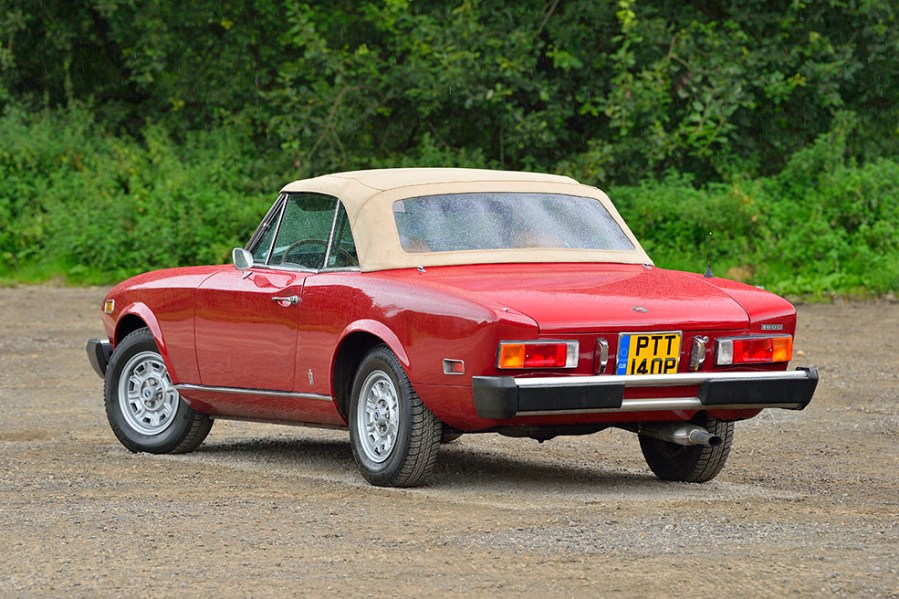
Bodywork
Like any other open-top sports car of monocoque construction, the 124 Spider is no stranger to rust. In reality it’s no more prone to corrosion than most of its contemporaries, so don’t assume it’s all bad news. In fact, with so many examples having been imported from American so-called ‘dry states’, a 124 will often be in far better condition – both structurally and cosmetically – than an MGB that’s spent its entire life in Britain. Just don’t assume that a Californian import is always hassle-free; a lack of rust might be made up for in sun damage to the bodywork and trim.
Wherever a 124 Spider hails from, look for signs of corrosion and poor quality restoration work. The whole of the underside needs careful examination, as areas like the inner sills, ‘chassis’ legs, floorpans and front crossmember can rust, as can the front suspension turrets.
As well as checking for corrosion, look underneath for signs of previous welding repairs, fresh underseal and other tall-tale signs of a bad repair. Major structural corrosion can cause weakness in the bodyshell, which can show itself via what look like misaligned panels, so it’s vital that the panel gaps are even – particularly the vertical alignment of the doors.
The panels themselves can also rust, of course; check the state of the front wings (particularly the wheelarches and wing edges), outer sills, rear arches, lower rear quarter panels and bootlid. As well as looking for holes, any bubbling paintwork is a sure sign that rust is working its way through from behind. Check for evidence of filler, patched-in paintwork and so on. If the 124 Spider been restored in the past, it should ideally come with some sort of photographic evidence to show the standard of the work.
The Fiat 124 Spider benefits from great availability of body panels and repair sections. Most items are available from specialists throughout Europe, including companies like Arnold Classic Shop (https://shop.arnold-classic.com) in Germany and FD Ricambi (www.fdricambi.com) in the Netherlands.
Depending on model year, complete front wings are available from around €575 each, inner and outer sills can be had from €159 and €120–395 respectively, and an outer rear wheelarch repair section is good value at less than €60. Complete new doors aren’t cheap at €890, but various door repair sections are available for anyone who’s handy with a welding torch.
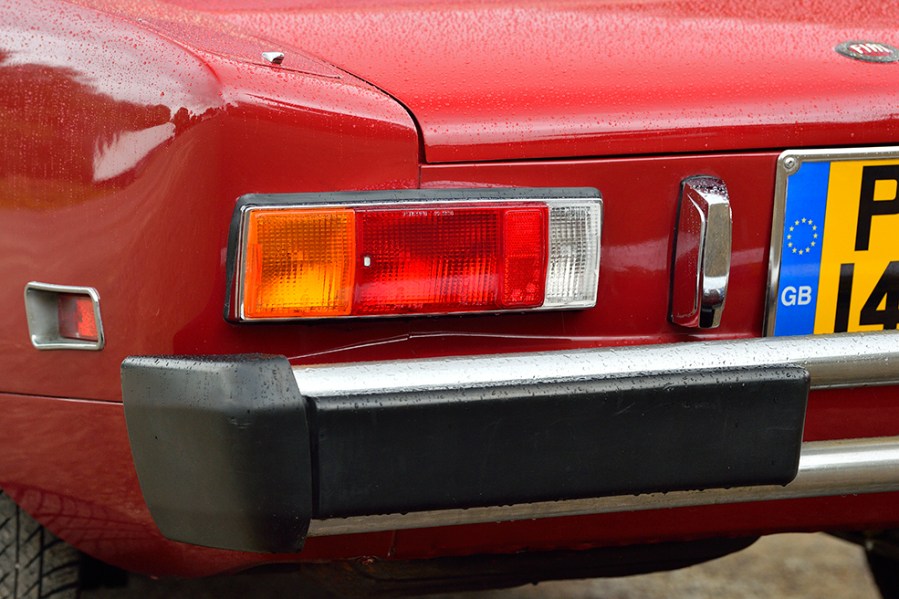
Engine and transmission
All Fiat 124 Spiders use the Italian firm’s famous twin-cam engine, but its spec – and cubic capacity – varies between the different generations. Even the early 1.4-litre versions came with a five-speed gearbox, which used a torque-tube mounted propshaft to drive the coil-sprung rear axle at the rear. Those torque tubes were found to crack, however, and so were dropped in favour of a more conventional open propshaft early on.
US-spec cars from 1978 or later had their 2.0-litre twin-cam tuned to comply with emissions regulations. Conversion to European-like spec and output is possible but is much easier on the fuel-injected models of 1980 onwards.
The Fiat twin-cam was one of the first mass-produced engines to use rubber timing belts, so factor this in if the history doesn’t have evidence of a recent change. Don’t neglect this, particularly on a 2.0-litre unit, as a snapped timing belt can put a hole in the engine block if the fuel pump lobe hits the connecting rod. On the smaller engines, timing belt failure can result in bent valves.
Look out for signs of overheating (including any previous problems shown via suspicious looking staining) as well as head gasket issues, as failure isn’t uncommon.
Fiat 124 Spider engines can be prone to oil leaks, so check carefully for signs. Also inspect the sump, which is particularly low and is vulnerable to grounding; look for evidence of sump damage that could cause an excessive oil leak.
The five-speed manual used in most Fiat 124 Spider models is a robust unit but check for signs of jumping out of gear, worn synchromesh, a slipping clutch and so on. American-spec Spiders could be ordered with automatic transmission, but this isn’t popular among UK buyers of imported cars.
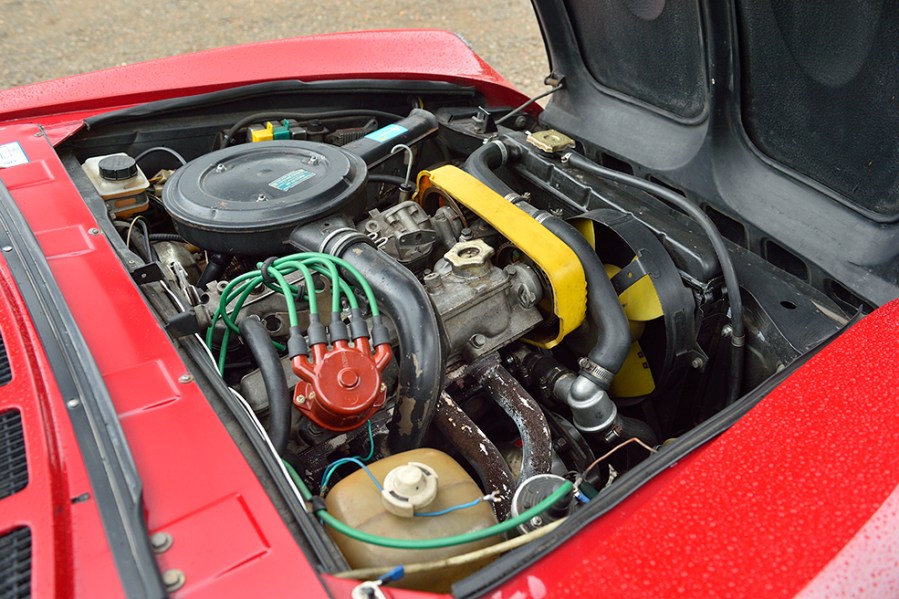
Suspension, steering and brakes
With so much componentry shared with other Fiat models, there’s nothing scary about Fiat 124 Spider running gear. It does, however, use a rubber flex disc in the driveline, something that will need checking regularly as its failure can be disastrous.
Steering and suspension (coil-sprung with a live rear axle) are straightforward enough, so it’s a case of carrying out the usual checks for worn or leaking dampers, split gaiters, broken or rusty coil springs, and so on. The car should feel taut when pushed into a corner, and the steering should be reasonably precise; any sign of sloppiness suggests wear and tear, so you’ll need to factor in some remedial attention.
Note that 1978-on US-spec models had a higher ride height in order to comply with American safety legislation, although some owners will have since converted their cars to European specification to improve both aesthetics and handling.
With discs all round, any Fiat 124 Spider in fine fettle should have reassuringly good brakes, but should also be checked for signs of wear or neglect. Scored or rusty discs, excessively worn pads, leaking hoses and corroded pipes are all things to watch out for. Don’t worry too much about parts availability; just about everything you need to improve your Spider’s suspension, steering or brakes is available from specialists – although this may mean ordering from mainland Europe.
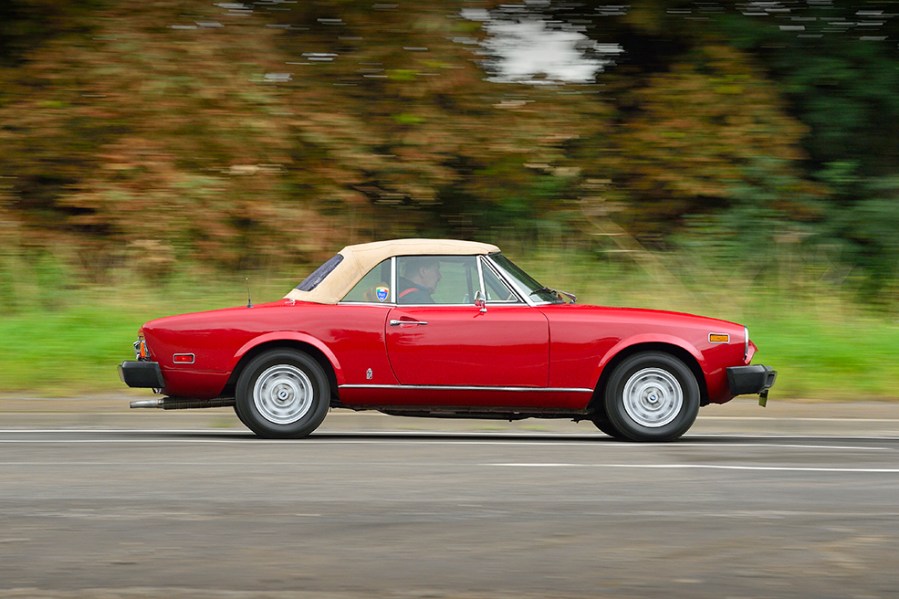
Interior, trim and electrics
The hood on an Fiat 124 Spider needs to be checked carefully. US imports in particular are prone to sun damage; if the hood is worn, split or simply tatty, it will need replacing. New hoods are readily available from specialists, including Germany’s Eurotop (www.verdeck.de), which supplies them in a choice of fabrics and colours, priced from €708.
Check the interior of the car for signs of previous leaks (look for damp carpets), and also seats for wear and splits. New seat covers and upholstery sections are readily available – but again there’s a cost issue.
Electrics can be troublesome, although most problems tend to be caused by nothing more than poor connections. Spider 2000 models used circuit boards in their rear lights, which sometimes cause intermittent problems. Another issue with the 2.0-litre cars is the magnetic pick-up coil in the distributor, as the wires can eventually lose their insulation and short out thanks to proximity to the exhaust. Check this at every service and replace if there are signs of cracked wires.

Fiat 124 Spider: our verdict
If you’re in the market for a two-seater sports car with its roots in the 1960s and don’t fancy the usual suspects from MG or Triumph, a Fiat 124 Spider could provide an entertaining alternative.
Whichever version you end up with, you’ll get to enjoy the power and aural delights of a twin-cam engine coupled with a sharp five-speed gearbox, great cruising ability and an all-round pleasing driving experience. The fact that this long-running Italian is so damned handsome is another welcome bonus, as is the sheer value for money that the Fiat 124 Spider still represents.
Although sale prices of the 124 Spider have crept up in recent years, there’s been no sudden boom in values – which is great news for anyone thinking of buying one now. We’ve seen tempting rolling projects changing hands at auction for £5000 or so, while around £9000–10,000 should secure a standard-spec car in good order that would benefit from minor cosmetic improvements.
A budget of £15,000 should be more than enough to get a show-ready example, while around £12,000 buys an example (particularly at auction) that wouldn’t look out of place at any classic event. Expect to pay up to £20,000 for something in concours condition – although these are relatively few and far between.
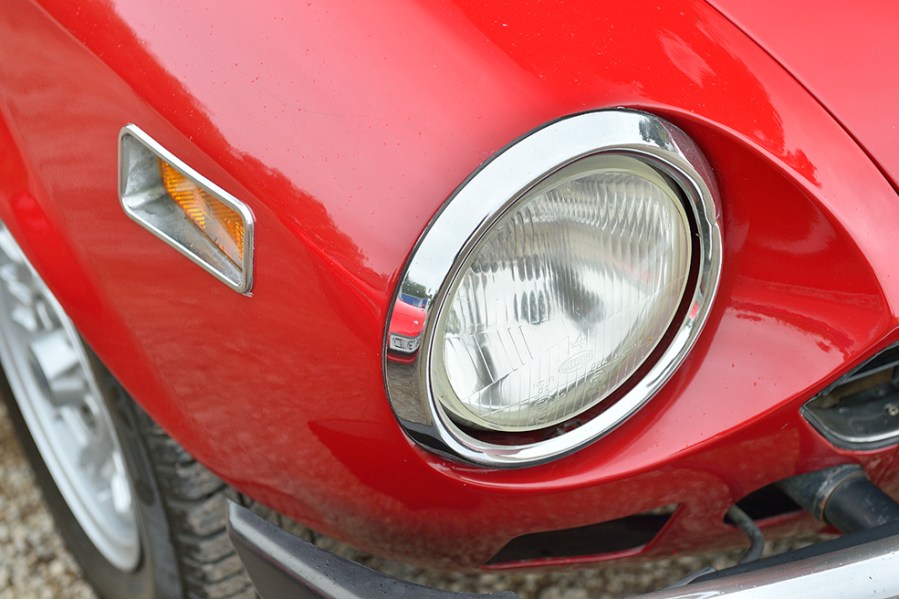
Fiat 124 Spider timeline
1966
Fiat 124 Sport Spider (to give it its full name) debuts with 1438cc (89bhp) DOHC engine
1970
Engine is upgraded to 1608cc, boasting an official output of 108bhp
1973
Small decrease in engine capacity (to 1592cc), with power output now at 105bhp
1974
Ex-Fiat 132 1756cc engine is added, offering extra flexibility and better performance
1979
Adoption of 1995cc version of the twin-cam, creating the Spider 2000
1980
Bosch fuel-injection replaces Weber carbs, pushing power to 104bhp
1982
Car is rebadged as the Pininfarina Spidereuropa (or Super Azzura in the USA)
1985
Pininfarina finally halts production after a run of 19 years

